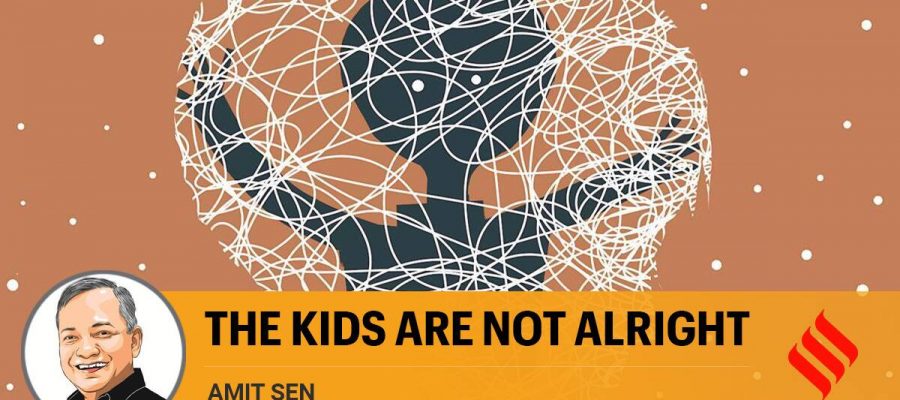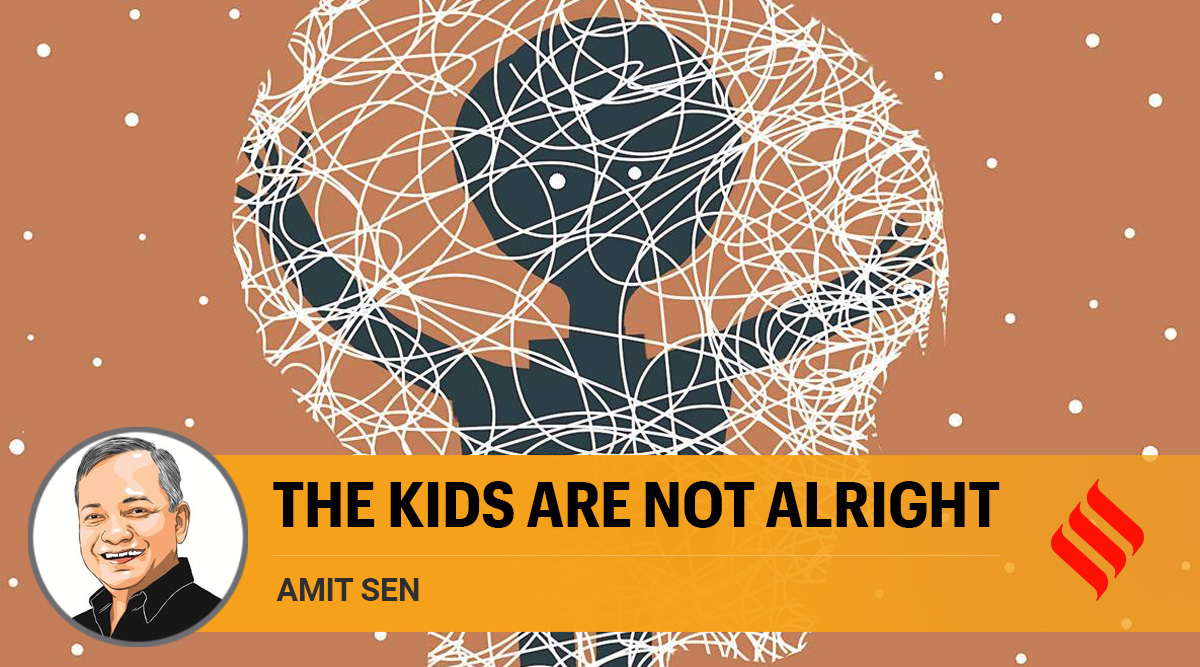Policy and public discourse must listen to their distress and reconsider priorities in terms of their well-being
The second wave of COVID-19 has left us reeling, exposing the cracks and bigotry in our systems like no other time. It has left most infrastructures shaken and wanting but, mostly, it is our health and welfare services that have come under scrutiny. Post COVID, the central government increased the health budget from 1.2 to 2.5 per cent of GDP (from 2020 to 2021), which is still way below developed countries, or even developing countries in our own subcontinent. Within this, the allocation to mental health, on an average in the last couple of years, has been a paltry 0.05 per cent of the health budget. And within that, child and adolescent mental health get a minuscule fraction, if anything at all. This might give us an idea about how much we prioritise child mental health and well-being at a national level.
What makes this even more befuddling is the abject apathy towards shocking realities: India has one of the highest rates of child abuse, depression and suicide amongst children and youth in the world.
Needless to say, the pandemic and consequent lockdown have had a profound impact on mental health and well-being, especially among the youth. Adults across the world, including India, are reporting a four-fold increase in anxiety and depressive symptoms. Adolescents and young adults in the age range of 18 to 25 are exhibiting even higher rates of emotional distress, as well as a marked increase in substance misuse, suicidal thoughts and behaviours.
A WHO survey has found that the COVID-19 pandemic has disrupted or halted critical mental health services in 93 per cent of countries worldwide while the demand for them is increasing. The scenario has been no different in India, with its limited facilities; child mental health services came to a grinding halt when the first lockdown was announced abruptly, in March 2020. After the initial lull, when people were jolted by the physical and financial implications of the lockdown, tens of thousands of families and young people started reaching out for help, many in a state of panic and confusion.
It is ironic that we often understand and appreciate the value of something only once it’s broken. Besides the imminent physical threat and trauma that the pandemic has caused, the disruption of daily life as we know it has had jarring effects on mental health, particularly for children. The daily rituals of school, playground, hobbies and mealtimes with the same people and activities may appear mundane and repetitive, but they form the platform for emotional safety and stability that are prerequisites for any child’s healthy growth and development. It was not surprising, therefore, when parents in the throes of despair started reaching out to us, helpless in the face of the disrupted sleep cycles, constant demands for junk food, frequent tempers and emotional meltdowns, and a breakdown of trust and communication with their children. Their efforts to reclaim parental control and instil routine and discipline only made matters worse. The fact that the parents themselves were grappling with institutional breakdown, whether school, their jobs and salaries, transport or access to medical services, didn’t help matters.
And as the weeks stretched to months, holidays had to be cancelled, birthdays and festivals couldn’t be celebrated, and young people could no longer meet their closest friends or favourite cousins, or visit relatives as they would during vacations. It was as if the pandemic had snatched away valuable connections, freedom and agency that bring pleasure and joy to our lives, and the consequent deep sense of loss led to hopelessness and despair. Quite early in the lockdown, we began to realise that the young people who couldn’t get back to their families in time were the worst affected.
Sensing a need in the community, we opened a dedicated brief therapy service for adolescents and young adults who were affected by the COVID crisis. Hundreds of young people reached out for help; having got cut off from family and friends, they were battling with loneliness and isolation, trying desperately to shrug off real and imagined fears that surrounded them. Many had lost their fledgeling jobs and others could not go to their dream colleges as they had planned. What struck us was that the same young people who were considered capable, well-adjusted and successful before the pandemic were struggling to hold on to shreds of hope in the face of complete uncertainty about their future, and slipping into anxiety, depression and self-destructive behaviours.
One can’t even begin to imagine the plight of children who were caught up in the treacherous walk back home with families of migrant labourers, young people who experienced separation and death due to COVID; or the ones who were exposed to domestic violence, deep financial crises and suicide — all of which have seen a sharp increase in these times. Such experiences can be deeply traumatic and leave resistant scars that can take a lifetime to heal. Or worst still, they can be passed on from one generation to another in the form of mistrust, paranoia and violence towards oneself or others.
Traumatic events cannot get more complicated or devastating than this one. Natural disasters like a tsunami or an earthquake are finite and give us a chance to recover after the devastation they cause. This pandemic is relentless, more like an endemic war zone but on a global scale. Just as we were beginning to raise our heads and were limping back to a semblance of normalcy, the second wave hit us, wiping away any hope that we were tentatively gathering.
Yet, we must hold on to anchors that help us keep afloat. Even if one can’t generate hope in this chaos, there could be a conscious effort to re-connect with memories and meaning, to have faith in our values and vision, to learn how to take one day at a time and enjoy the small gifts of life. Young people can be willing partners in the discovery of spaces and novel ways of connecting to the world around us, and this process itself can be protective and healing for them.
Most importantly, this can be an opportunity to question the given. The pandemic has jolted humanity and made us question the way we have treated nature and our environment, and has raised doubts about the meaning of success, the institutions that define it and our mindless pursuit of the material. It has also given us a chance to reconsider our priorities in terms of the mental health and well-being of our children, which could have a profound impact on the choices they make to shape our future world. But the question is: How much of mind-space and resources are we willing to devote to creating a “new normal” for our young people and their future, and indeed for humanity to survive?
This column first appeared in the print edition on April 30, 2021 under the title ‘The kids are not alright’. The writer is a child and adolescent psychiatrist working in Delhi.
Source: Read Full Article


